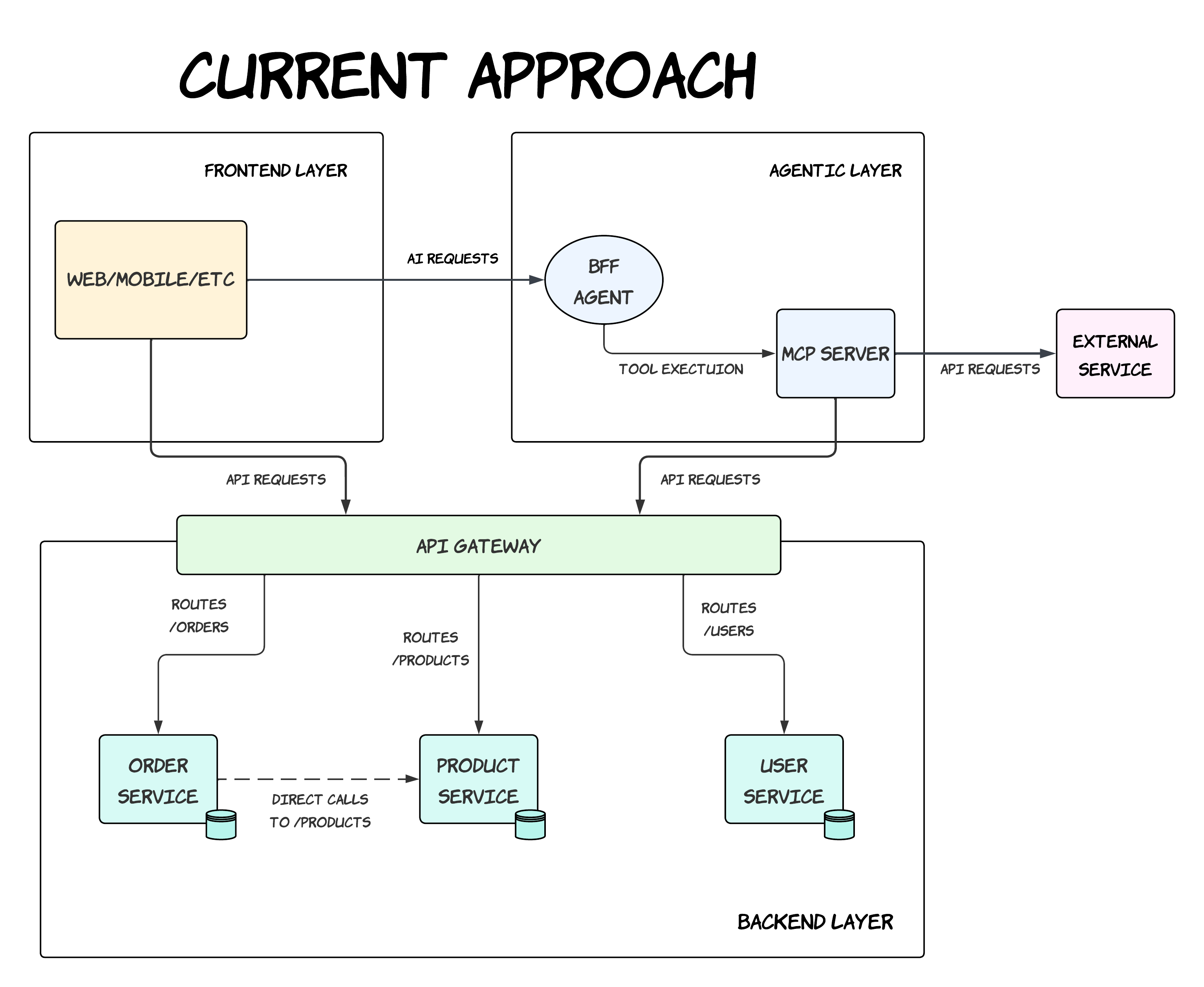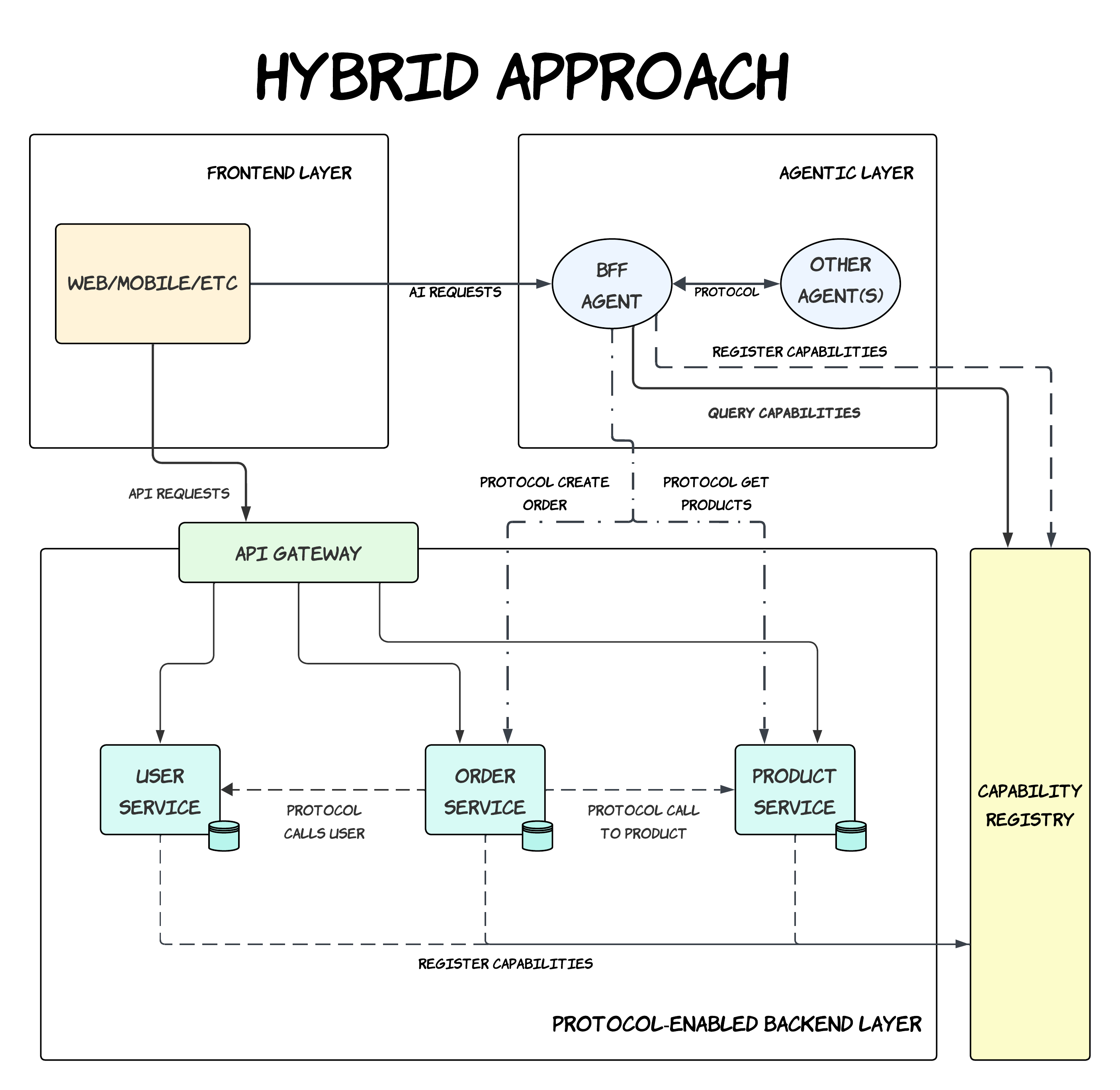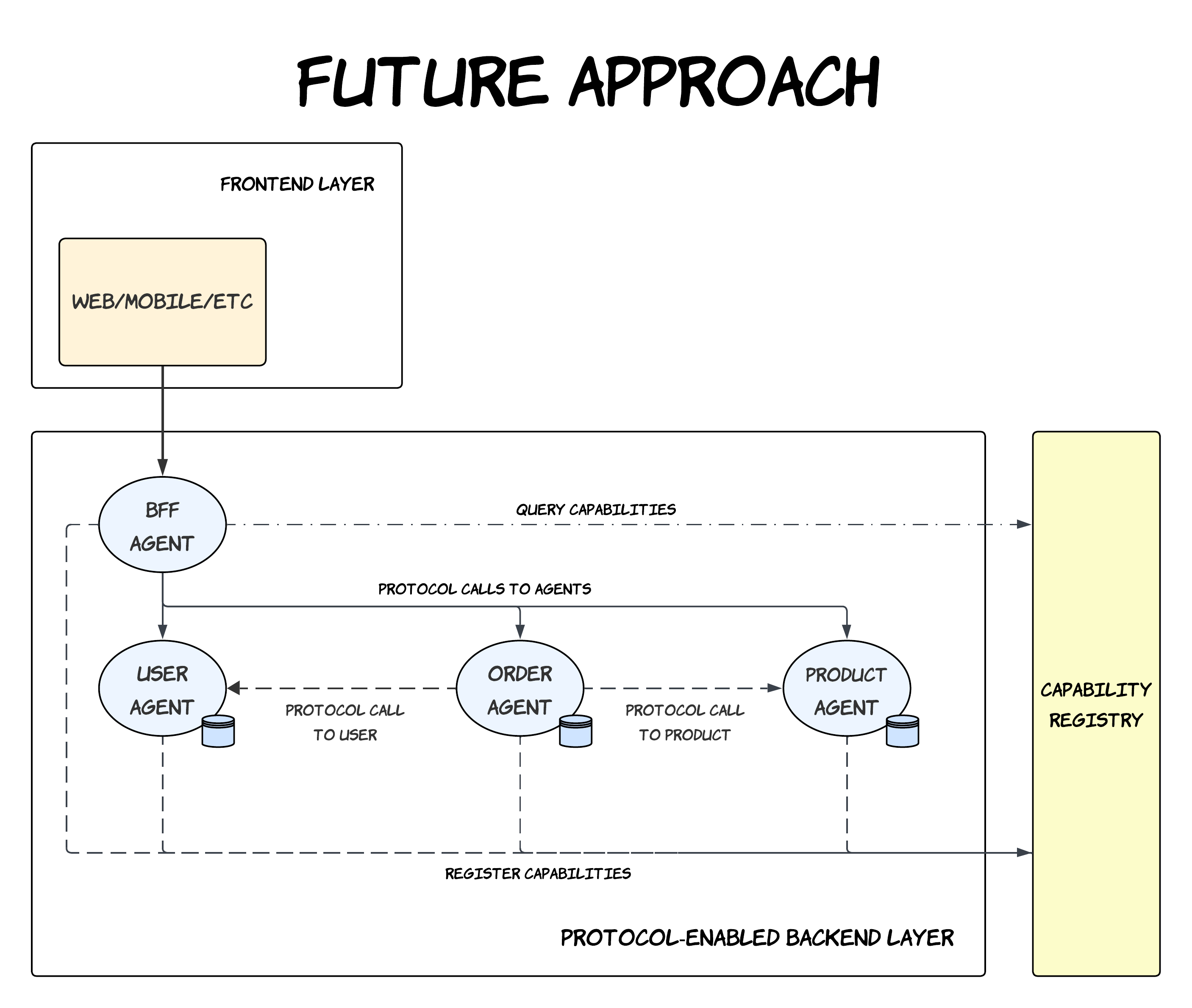Thinking Ahead: Could Agent Protocol Principles Reshape Microservices?

AI agents are booming, no doubt. But getting them to play nicely with our existing microservice world often feels like forcing a square peg into a round hole. We use wrappers, translators (like MCP servers), and tool definitions – it works, kind of, but feels complex and brittle.
Current Integration Pattern
Let's visualize what the common integration pattern often looks like today:

Diagram: Typical microservice architecture showing standard client access via API Gateway alongside AI Agent access via MCP/Tool Wrappers, plus internal communication patterns direct calls.
You can see the multiple layers and different interaction patterns involved, especially the separate path the AI agent often takes via wrappers like MCP.
Fundamental Question
As AI becomes a core part of our systems, how should our underlying service architecture evolve to treat it as a first-class citizen? Do we keep adding layers of translation, or do we need a different communication fabric?
Exploring Agent Communication Protocols
This led me down an interesting thought path (I’ll be honest, it woke me up at 2AM and I could not go back to sleep): what if we looked at emerging agent communication protocols, like Google's A2A (Agent-to-Agent protocol)? Not necessarily A2A exactly as it stands today, but the principles behind it. Could a protocol designed for discovery, capability negotiation, and collaboration offer a glimpse into a more unified future for all our services, not just the AI-enabled ones?
The Core Idea: A Unified, Capability-Aware Fabric
Imagine an architecture where services – both AI agents and our standard deterministic microservices ("Protocol-Aware Services") – communicate using a common, rich protocol.
Key Differences from API Gateways:
- Dynamic Capability Discovery: Instead of just routing to
/orders, services advertise their capabilities via standardized "Capability Cards" (like A2A's Agent Cards). Participants (especially AI agents) could discover needed functionality on the fly. - Rich Interaction Contracts: The protocol defines required inputs/outputs (e.g., embedded JSON Schema/Protobufs), interaction types (request/response or streaming), etc.
- Native AI Interaction: Assumes participants might negotiate or collaborate on complex tasks beyond simple API calls.
Proposed Architecture
Here's how this might look architecturally:

Diagram: Proposed Protocol-Aware Architecture featuring a central Discovery Service where services register capabilities. Agents and services interact directly via a Unified Protocol after discovering each other.
Benefits:
- Agents become first-class citizens in the microservice ecosystem.
- No hard-coded logic in agents or MCP servers for various microservices/contracts.
- Easier deployment of agents into existing systems.
- Automatic access to new microservices/capabilities as they are built.
Example Use Case
An AI agent needing complex financial analysis wouldn't just call a predefined /calculate endpoint via a gateway. Instead:
- Discover "FinancialAnalysisService."
- Query its "Capability Card" for required inputs/parameters defined in a standard schema.
- Initiate the task using the protocol with asynchronous progress updates – all via the same standardized mechanism used to talk to simpler services like "UserService."
Addressing Old Microservice Pain Points
Adopting these principles could also help with classic microservice headaches:
- Standardizing Discovery: Built-in registration simplifies fragmented discovery tools.
- Enforcing Contract-First Design: Mandatory capability definitions enforce good design discipline.
Future Vision: Everything as an Agent

Diagram: Future vision where everything is an agent and protocol-enablement is first class.
Reality Check: Challenges Ahead
While promising, this vision faces major hurdles:
- Protocol Immaturity & Risk: Agent protocols are evolving; betting critical infrastructure on them now is risky.
- Massive Adoption Barrier: Moving away from REST/gRPC ecosystems is monumental.
- Performance Questions: Richer protocols add overhead; serious benchmarking is needed.
- Operational Complexity: Robust handling of network partitions, failure modes, retries, etc., must be addressed in mature specifications.
- Tooling Gaps: Debugging/versioning tools lag behind REST/gRPC ecosystems.
- Governance Needs: Clear lifecycle management for advertised capabilities is essential.
- Technical Debt Risk: Early adoption risks significant rework if standards evolve differently than anticipated.
Comparison with Other Solutions
Other approaches exist:
- Service meshes improve inter-service communication.
- Modern API Gateways add discovery features.
- Event-driven architectures handle async well.
The differentiator here is offering a unified fabric designed for both sophisticated agent interaction and standard service communication centered around discoverable capabilities and rich contracts.
Alternatively, standards like OpenAPI/AsyncAPI could evolve to incorporate richer capability definitions/discovery mechanisms.
Pragmatic Path Forward
Given the risks:
-
Think in Capabilities:
- Start defining core service capabilities in structured machine-readable formats (e.g., OpenAPI extensions).
- Implement internal 'capability registries' today to ease future adoption of such protocols.
-
Experiment Cautiously:
- Prototype non-critical internal services using agent protocol interfaces.
- Build internal libraries abstracting the protocol for safer experimentation.
-
Monitor Standards:
- Track evolution/standardization of protocols like A2A for maturity/best practices.
-
Consider Hybrids:
- Use agent protocols selectively for AI-heavy interactions/subsystems while maintaining traditional APIs elsewhere.
Designing for an AI-Native Future
Jumping onto specific agent protocols today may be premature for most production systems. However:
- Unified discovery
- Enforced contracts
- Native support for richer interactions
These principles offer a compelling vision for future architectures where AI isn't an afterthought but a core component.
The conversation we need isn't just "How do we connect this agent?", but "What architectural foundation best supports seamless collaboration between AI and traditional services?"
Exploring these ideas thoughtfully seems crucial to finding that answer.





